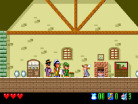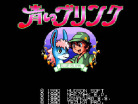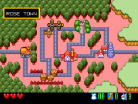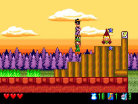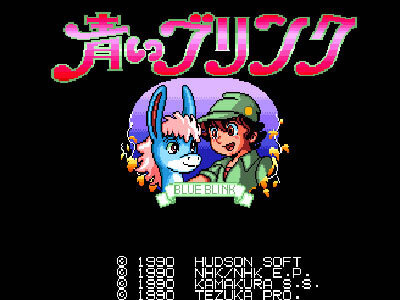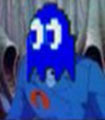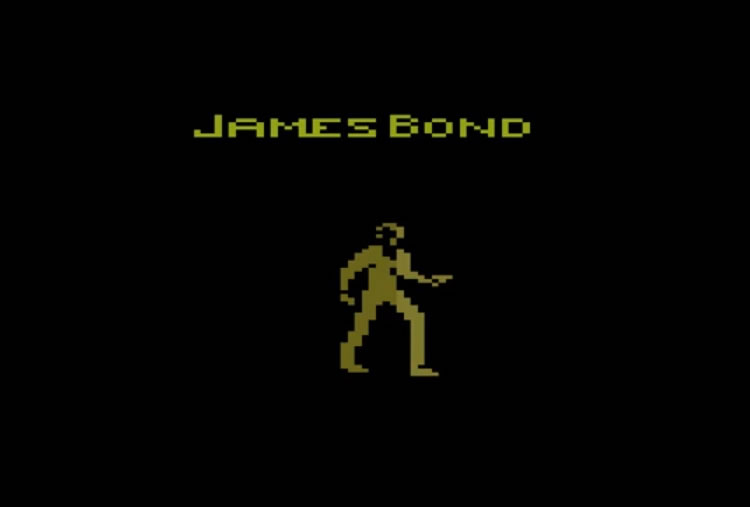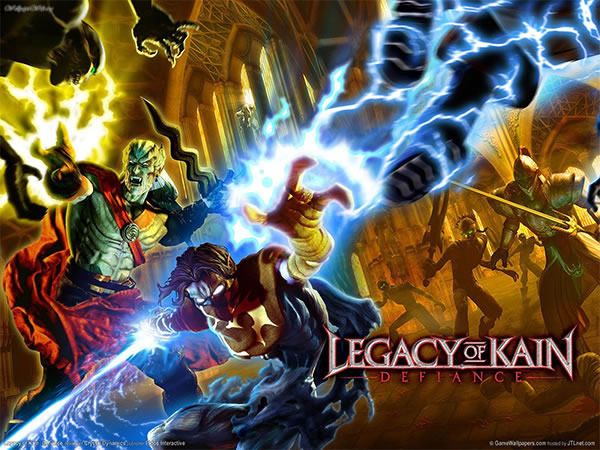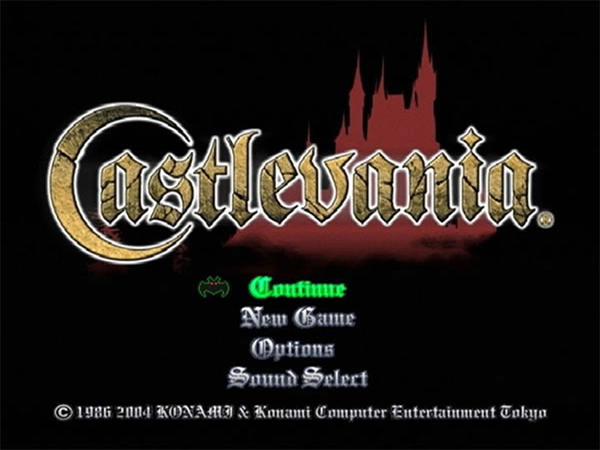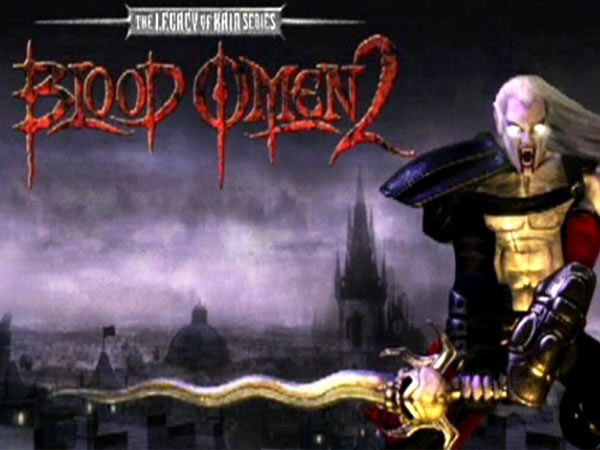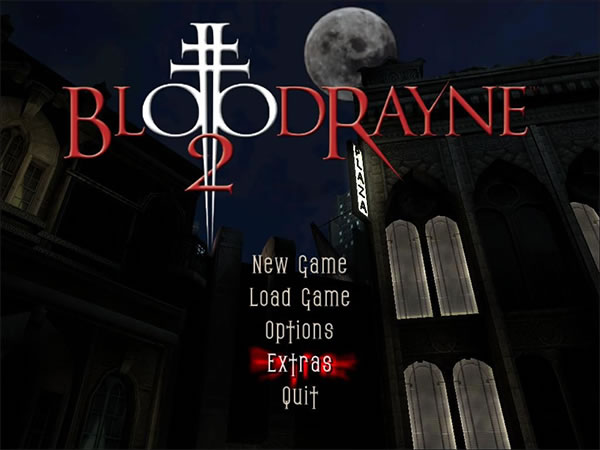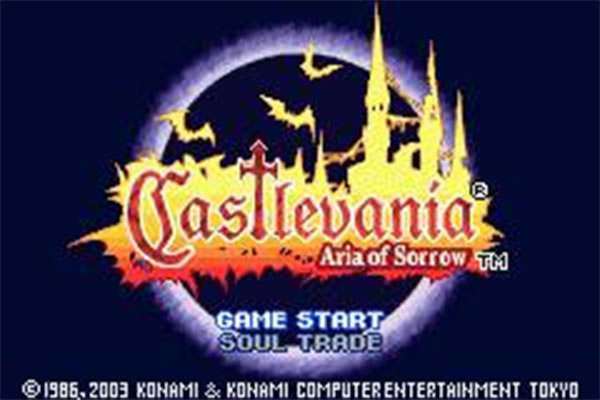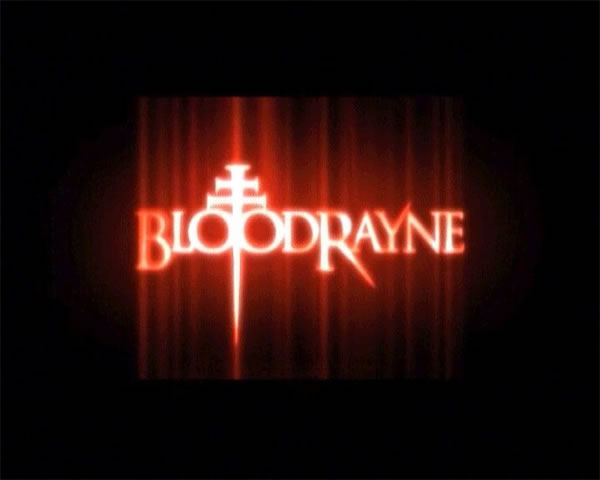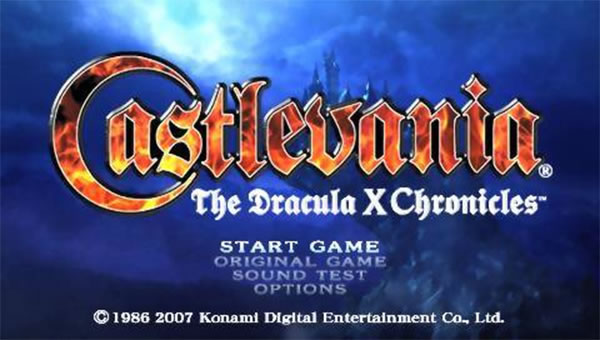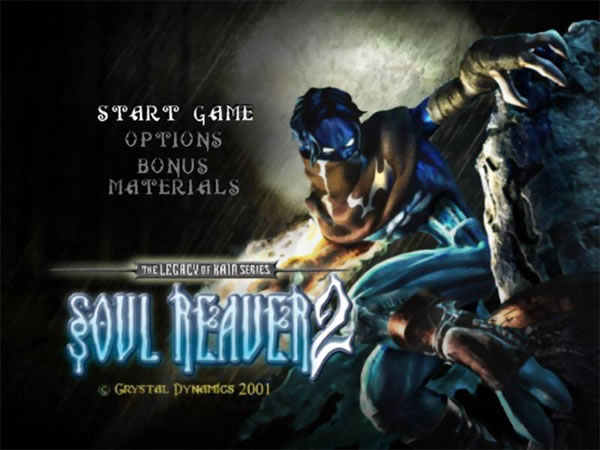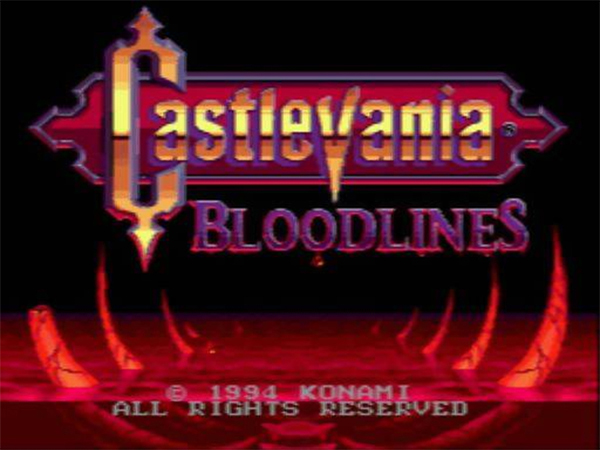- CLASSIC MAGAZINES
- REVIEW CREW
A show recapping what critics thought back
when classic games first came out! - NEXT GENERATION'S BEST & WORST
From the worst 1-star reviews to the best
5-stars can offer, this is Next Generation! - NINTENDO POWER (ARCHIVE)
Experience a variety of shows looking at the
often baffling history of Nintendo Power! - MAGAZINE RETROSPECTIVE
We're looking at the absolutely true history of
some of the most iconic game magazines ever! - SUPER PLAY'S TOP 600
The longest and most ambitious Super NES
countdown on the internet! - THEY SAID WHAT?
Debunking predictions and gossip found
in classic video game magazines! - NEXT GENERATION UNCOVERED
Cyril is back in this spin-off series, featuring the
cover critic review the art of Next Generation! - HARDCORE GAMER MAGAZING (PDF ISSUES)
Download all 36 issues of Hardcore Gamer
Magazine and relive the fun in PDF form!
- REVIEW CREW
- ELECTRONIC GAMING MONTHLY
- ELECTRONIC GAMING MONTHLY RANKS
From Mario to Sonic to Street Fighter, EGM
ranks classic game franchises and consoles! - ELECTRONIC GAMING MONTHLY BEST & WORST
Counting down EGM’s best and worst reviews
going year by year, from 1989 – 2009! - ELECTRONIC GAMING BEST & WORST AWARDS
11-part video series chronicling the ups and
downs of EGM’s Best & Worst Awards!
- ELECTRONIC GAMING MONTHLY RANKS
- GAME HISTORY
- GAME OVER: STORY BREAKDOWNS
Long-running series breaking down game
stories and analyzing their endings! - A BRIEF HISTORY OF GAMING w/ [NAME HERE]
Real history presented in a fun and pithy
format from a variety of game historians! - THE BLACK SHEEP
A series looking back at the black sheep
entries in popular game franchises! - INSTANT EXPERT
Everything you could possibly want to know
about a wide variety of gaming topics! - FREEZE FRAME
When something familiar happens in the games
industry, we're there to take a picture! - I'VE GOT YOUR NUMBER
Learn real video game history through a series
of number-themed episodes, starting at zero! - GREAT MOMENTS IN BAD ACTING
A joyous celebration of some of gaming's
absolute worst voice acting!
- GAME OVER: STORY BREAKDOWNS
- POPULAR SHOWS
- DG NEWS w/ LORNE RISELEY
Newsman Lorne Riseley hosts a regular
series looking at the hottest gaming news! - REVIEW REWIND
Cyril replays a game he reviewed 10+ years
ago to see if he got it right or wrong! - ON-RUNNING FEUDS
Defunct Games' longest-running show, with
editorials, observations and other fun oddities! - DEFUNCT GAMES QUIZ (ARCHIVE)
From online quizzes to game shows, we're
putting your video game knowledge to the test!- QUIZ: ONLINE PASS
Take a weekly quiz to see how well you know
the news and current gaming events! - QUIZ: KNOW THE GAME
One-on-one quiz show where contestants
find out if they actually know classic games! - QUIZ: THE LEADERBOARD
Can you guess the game based on the classic
review? Find out with The Leaderboard!
- QUIZ: ONLINE PASS
- DEFUNCT GAMES VS.
Cyril and the Defunct Games staff isn't afraid
to choose their favorite games and more! - CYRIL READS WORLDS OF POWER
Defunct Games recreates classic game
novelizations through the audio book format!
- DG NEWS w/ LORNE RISELEY
- COMEDY
- GAME EXPECTANCY
How long will your favorite hero live? We crunch
the numbers in this series about dying! - VIDEO GAME ADVICE
Famous game characters answer real personal
advice questions with a humorous slant! - FAKE GAMES: GUERILLA SCRAPBOOK
A long-running series about fake games and
the people who love them (covers included)! - WORST GAME EVER
A contest that attempts to create the worst
video game ever made, complete with covers! - LEVEL 1 STORIES
Literature based on the first stages of some
of your favorite classic video games! - THE COVER CRITIC
One of Defunct Games' earliest shows, Cover
Critic digs up some of the worst box art ever! - COMMERCIAL BREAK
Take a trip through some of the best and
worst video game advertisements of all time! - COMIC BOOK MODS
You've never seen comics like this before.
A curious mix of rewritten video game comics!
- GAME EXPECTANCY
- SERIES ARCHIVE
- NINTENDO SWITCH ONLINE ARCHIVE
A regularly-updated list of every Nintendo
Switch Online release, plus links to review! - PLAYSTATION PLUS CLASSIC ARCHIVE
A comprehensive list of every PlayStation
Plus classic release, including links! - RETRO-BIT PUBLISHING ARCHIVE
A regularly-updated list of every Retro-Bit
game released! - REVIEW MARATHONS w/ ADAM WALLACE
Join critic Adam Wallace as he takes us on a
classic review marathon with different themes!- DEFUNCT GAMES GOLF CLUB
Adam Wallace takes to the links to slice his way
through 72 classic golf game reviews! - 007 IN PIXELS
Adam Wallace takes on the world's greatest spy
as he reviews 15 weeks of James Bond games! - A SALUTE TO VAMPIRES
Adam Wallace is sinking his teeth into a series
covering Castlevania, BloodRayne and more! - CAPCOM'S CURSE
Adam Wallace is celebrating 13 days of Halloween
with a line-up of Capcom's scariest games! - THE FALL OF SUPERMAN
Adam Wallace is a man of steel for playing
some of the absolute worst Superman games! - THE 31 GAMES OF HALLOWEEN
Adam Wallace spends every day of October afraid
as he reviews some of the scariest games ever! - 12 WEEKS OF STAR TREK
Adam Wallace boldly goes where no critic has
gone before in this Star Trek marathon!
- DEFUNCT GAMES GOLF CLUB
- DAYS OF CHRISTMAS (ARCHIVE)
Annual holiday series with themed-episodes
that date all the way back to 2001!- 2015: 30 Ridiculous Retro Rumors
- 2014: 29 Magazines of Christmas
- 2013: 29 Questionable Power-Ups of Christmas
- 2012: 34 Theme Songs of Christmas
- 2011: 32 Game Endings of Christmas
- 2010: 31 Bonus Levels of Christmas
- 2009: 30 Genres of Christmas
- 2008: 29 Controls of Christmas
- 2007: 34 Cliches of Christmas
- 2006: 33 Consoles of Christmas
- 2005: 32 Articles of Christmas
- 2004: 31 Websites of Christmas
- 2003: 29 Issues of Christmas
- 2002: 28 Years of Christmas
- 2001: 33 Days of Christmas
- NINTENDO SWITCH ONLINE ARCHIVE
- REVIEW ARCHIVE
- FULL ARCHIVE
Blue Blink
Often you hear little kids saying they want to own a pony, but who actually gets one? And if one does have a pony, he sets herself up for criticism. Other kids might tease him, call him a rich snob, and then the deep reality of class envy is thus learned at a young age. Perhaps this is why, out of all the equestrian animals, the pony is seen as the least heroic. Horses of legend are rugged and brave and given virile names like Silver, Trigger, or Roland's Veillantif. Likewise, donkeys, though nameless, connote heroism; they carried Jesus into Jerusalem, lugged munitions in the First World War, and they even represent a major political party in the United States. Ponies need representation. Heck, even the famous Pony Express was run by men with horses.
And then one day, a young boy named Kakeru, finds a pony in a thundershower, rescues him from a drowning, and in return is given the power to summon the animal in times of need. When Kakeru's father is kidnapped, the boy calls in the favor immediately and with aid of the mystical pony, he sets out on a rescue mission. Don't make fun of this little boy's pony, lest you want to face-full of hoof.
The father-quest that is Blue Blink is a surreal story that grows stranger with each frame. After finding Blink, Kakeru enters a magical transdimensional bus that brings him into a fantastic land of princesses, demigods, and sorcerers. The show's artist and writer, Osamu Tezuka, the progenitor of today's anime, highlights the story's dreamlike quality by making a nod to the master of surreal, Salvador Dali, in the intro adorned with bent clocks (ala Dali's Persistence of Memory). The cartoon is celebrated as one of Tezuka's "most ambitious" works, but it never came to a full realization since the artist died a few months before its debut.
As a game, Blue Blink has largely gone unnoticed, and this is a shame since this may very well be one of the best non-CD platformers for the PC-Engine next to the Bonk series. Sharply drawn and colorful sprites move with alacrity across equally vibrant backdrops. You control three characters simultaneously in congo-line style, with the leader being the only one susceptible to damage. The "select" button allows you to change the bellwether of the group, each with his own special ability. Like the U.S. Super Mario Bros. 2, you choose your protagonist based on the layout of the land, but the developers here save you some guesswork and provide the three characters you will need to finish each level. Also like SMB2, a princess in a pink dress allows you to make jumps more easily (according to video game physics, pink skirts are the equivalent of a pair of Air Jordans). Princess Kirara, however, cannot kill any enemies, so you will need to use her sparingly according to the each situation. The rest of the characters (Kakeru, Tanba, Nitch, and Satch) fire weapons with different trajectories and intensity, and you may want to toggle between each to discover some hard-to-reach hidden, invisible objects in each level.
Each world begins with an overview world map, and you are given a limited choice of what route to take to reach the resident boss. Getting to the last level of each world is often swift and easy, but when you arrive at the door to each boss's lair, you may find yourself without a red key. Though slightly frustrating, looking for the hidden red keys in each world gives what could have been an all-too-brief game longevity. Backtracking to comb already completed stages for an invisible jar holding a key sounds repetitive and dull, but the bouncy and jaunty nature of the each stage makes for a fun treasure hunt. Once you know where all the keys are located, the game takes a little over an hour to solve.
As in cartoon, the pony only shows up in times of dire need. When you fall down chasms, he buoys you back onto terra firma; when you lose all of your health, he breathes a little more life into you; when you face the five boss battles, he serves as your faithful and powerful steed. These boss battles are typical and fair, each following a set of memorable patterns that can be mastered in only a few attempts each.
The strangest flaw in the entire game occurs during the forced scrolling stages. If you find yourself wedged between an obstacle and the edge of the screen, you may lose all of your lives in one shot. This seems more of a glitch or oversight than an intentional punishment. The good news is you can continue and return to the last world you visited, but you will need to restock on all the supplies and lives you had just lost.
Like the truncated cartoon series, the game seems to fall a bit short of its initial potential. Since the first three worlds are named after colors (Ivory Town, Rose Town, and Yellow Town), you may get excited and think that the game will explore the whole chromatic gamut, from ROY all the way to BIV. The fourth world, however, is simply called Rainbow Town, summing up the entire spectrum, and then it is followed by a final and more linear world where you showdown with a sorcerer and find your father. When you consider, however, that there is no password system, perhaps it is merciful and right that the game isn't larger than it is.
Blue Blink is a very well balanced platformer that requires a reasonable amount of dexterity, thought, and commitment. Most gamers will be able to finish it after a few sittings, but most will not have that hollow feeling that they have just beaten an easy game.
And then one day, a young boy named Kakeru, finds a pony in a thundershower, rescues him from a drowning, and in return is given the power to summon the animal in times of need. When Kakeru's father is kidnapped, the boy calls in the favor immediately and with aid of the mystical pony, he sets out on a rescue mission. Don't make fun of this little boy's pony, lest you want to face-full of hoof.
The father-quest that is Blue Blink is a surreal story that grows stranger with each frame. After finding Blink, Kakeru enters a magical transdimensional bus that brings him into a fantastic land of princesses, demigods, and sorcerers. The show's artist and writer, Osamu Tezuka, the progenitor of today's anime, highlights the story's dreamlike quality by making a nod to the master of surreal, Salvador Dali, in the intro adorned with bent clocks (ala Dali's Persistence of Memory). The cartoon is celebrated as one of Tezuka's "most ambitious" works, but it never came to a full realization since the artist died a few months before its debut.
As a game, Blue Blink has largely gone unnoticed, and this is a shame since this may very well be one of the best non-CD platformers for the PC-Engine next to the Bonk series. Sharply drawn and colorful sprites move with alacrity across equally vibrant backdrops. You control three characters simultaneously in congo-line style, with the leader being the only one susceptible to damage. The "select" button allows you to change the bellwether of the group, each with his own special ability. Like the U.S. Super Mario Bros. 2, you choose your protagonist based on the layout of the land, but the developers here save you some guesswork and provide the three characters you will need to finish each level. Also like SMB2, a princess in a pink dress allows you to make jumps more easily (according to video game physics, pink skirts are the equivalent of a pair of Air Jordans). Princess Kirara, however, cannot kill any enemies, so you will need to use her sparingly according to the each situation. The rest of the characters (Kakeru, Tanba, Nitch, and Satch) fire weapons with different trajectories and intensity, and you may want to toggle between each to discover some hard-to-reach hidden, invisible objects in each level.
Each world begins with an overview world map, and you are given a limited choice of what route to take to reach the resident boss. Getting to the last level of each world is often swift and easy, but when you arrive at the door to each boss's lair, you may find yourself without a red key. Though slightly frustrating, looking for the hidden red keys in each world gives what could have been an all-too-brief game longevity. Backtracking to comb already completed stages for an invisible jar holding a key sounds repetitive and dull, but the bouncy and jaunty nature of the each stage makes for a fun treasure hunt. Once you know where all the keys are located, the game takes a little over an hour to solve.
As in cartoon, the pony only shows up in times of dire need. When you fall down chasms, he buoys you back onto terra firma; when you lose all of your health, he breathes a little more life into you; when you face the five boss battles, he serves as your faithful and powerful steed. These boss battles are typical and fair, each following a set of memorable patterns that can be mastered in only a few attempts each.
The strangest flaw in the entire game occurs during the forced scrolling stages. If you find yourself wedged between an obstacle and the edge of the screen, you may lose all of your lives in one shot. This seems more of a glitch or oversight than an intentional punishment. The good news is you can continue and return to the last world you visited, but you will need to restock on all the supplies and lives you had just lost.
Like the truncated cartoon series, the game seems to fall a bit short of its initial potential. Since the first three worlds are named after colors (Ivory Town, Rose Town, and Yellow Town), you may get excited and think that the game will explore the whole chromatic gamut, from ROY all the way to BIV. The fourth world, however, is simply called Rainbow Town, summing up the entire spectrum, and then it is followed by a final and more linear world where you showdown with a sorcerer and find your father. When you consider, however, that there is no password system, perhaps it is merciful and right that the game isn't larger than it is.
Blue Blink is a very well balanced platformer that requires a reasonable amount of dexterity, thought, and commitment. Most gamers will be able to finish it after a few sittings, but most will not have that hollow feeling that they have just beaten an easy game.
HOME |
CONTACT |
NOW HIRING |
WHAT IS DEFUNCT GAMES? |
NINTENDO SWITCH ONLINE |
RETRO-BIT PUBLISHING
Retro-Bit |
Switch Planet |
The Halcyon Show |
Same Name, Different Game |
Dragnix |
Press the Buttons
Game Zone Online | Hardcore Gamer | The Dreamcast Junkyard | Video Game Blogger
Dr Strife | Games For Lunch | Mondo Cool Cast | Boxed Pixels | Sega CD Universe | Gaming Trend
Game Zone Online | Hardcore Gamer | The Dreamcast Junkyard | Video Game Blogger
Dr Strife | Games For Lunch | Mondo Cool Cast | Boxed Pixels | Sega CD Universe | Gaming Trend
Copyright © 2001-2025 Defunct Games
All rights reserved. All trademarks are properties of their respective owners.
All rights reserved. All trademarks are properties of their respective owners.






